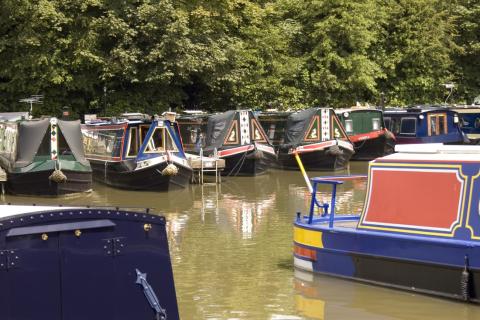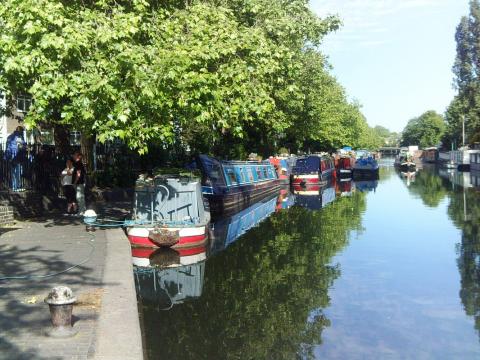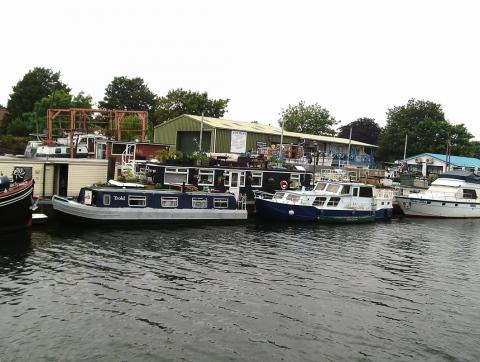All change for C&RT boat licences?
February 2017 - The announcement of a shake-up of C&RT licences will open a can of worms, predicts Peter Underwood.
Despite the strange departure this Easter of Mike Grimes, Canal & River Trust’s Head of Boating, the organisation has decided to plough ahead with an attempt to change the way boats are licensed.
It is a decision that could easily result in bitter disputes between the charity and various boating groups.
There have long been those who want to see continuous cruisers pay a larger licence fee than marina-based boats and others who feel wide-beamed boats should pay double the fees of narrowboats.
Some marina dwellers think continuous cruisers should pay a high licence, and they are supported by some IWA officials
There have long been those who want to see continuous cruisers pay a larger licence fee than marina-based boats and others who feel wide-beamed boats should pay double the fees of narrowboats.
Some will see it as inevitable that those within the IWA who habitually attack liveaboard boaters will want to use the consultation as a weapon to penalise those who have boats as their homes – especially the hundreds who continuously cruise the canals of the capital.
So why has C&RT decided now is the time to open a can of worms over licences – even though it has decided to stand back from the consultation process by handing it over to a charity?
The Trust claims the current system is 'often cited by boat owners as being complex and out of date', although it doesn't specify which boaters.
The consultation will be run by Involve, an independent charity specialising in public engagement.
According to C&RT: “It aims to ask boaters the fairest and simplest way to split the important financial contribution made by the different types of boats and boaters towards the upkeep of the waterways.”
In reality, the objective of changing the current system is to extract more money from boaters.
Ian Rogers, customer service and operations director, admits: “It’s more important than ever that we plan to ensure the long-term sustainability of our waterways so that boaters can continue enjoying them both now and in the future.
“With income from licensing playing an important part in the charity’s finances it is essential that it is spread fairly across all types of boaters as well as other income sources like property, utilities and fundraising.”
It is also inevitable, if the transfer of Environment Agency (EA) waters to C&RT is to ever happen, that the charity will have to choose between the EA licensing system based on the area of the boat in the water and the current simple system of measuring a boat's length.
Given that switching the EA licence holders to a simple length calculation would mean a considerable reduction in income and that going to an area calculation (width X length) will bring in more from the increasing number of widebeams on C&RT waters; it is easy to see where the Trust's financial interests lay.
In fact, it is difficult to see, whatever the outcome of the consultation, any other decision than a switch to licences based on area not length.
The first step of a three-stage consultation Involve will interview representatives from the main boating organisations to find out their views on how the consultation should work and what it should cover.
The second stage, from April, will see Involve host a series of 'in-depth workshops' with boaters across the country. C&RT says: “Participants will reflect the diversity in the boating community,” which may well mean those being consulted will be chosen by C&RT or it's contractor.
The final stage will be an opportunity for all boat owners to give their views on the options developed during the two previous stages.
Ian Rogers, customer service and operations director at Canal & River Trust, said: “The current licensing system has been in place for over twenty years. Boating has changed a lot in the meantime and the Trust wants to ensure the licensing structure is fit for purpose.
“Feedback from boaters suggests that many feel the current licensing is overly complex and can be perceived as unfair, and this consultation seeks to discuss these areas of concern.
“This is the most significant review of licensing in a generation and I welcome the fact that boaters will be helping to decide the shape of things to come.”
Diane Beddoes, an Associate at Involve, who are acting as C&RT's front, added: “Our brief is to apply our principles of transparency, inclusiveness and collaboration to ensure that boaters are fully involved in helping create a balanced and simple boat licensing system.”
The closeness of the Inland Waterways Association to C&RT will also lead many to fear an attempt to use the proposed changes to penalise Continuous Cruisers without a home mooring, despite the cogent arguments that such boaters benefit the system.
One thing that can be predicted is that such a move would be fought tooth and nail by organisations representing liveaboard Ccers.
Boat organisations being consulted in the first stage include:
Association of Waterway Cruising Clubs (AWCC); British Marina Inland Boating (BMIB); British Marine; Community Boat Association; Dutch Barge Association; Historic narrow boat club; Hotel Boat Association; Inland Waterway Association (IWA); National Association of Boat Owners (NABO); National Bargee Travellers Association (NBTA); Navigational Advisory Group (Licensing & Moorings); Residential Boat Owners’ Association; Roving Continuous Traders Association (RCTA).
Photos: (Top) Some marina dwellers think continuous cruisers should pay a high licence, and they are supported by some IWA officials, (2nd) London liveaboard CCers may find themselves targeted, (3rd) On Environment Agency waters, like The Thames, licence fees are based on area, not length, (Bottom) Ian Rogers, CRT customer service and operations director.









